This post may contain affiliate links. Please read our disclosure policy. As an Amazon Associate, I earn from qualifying purchases.
Sourdough zucchini muffins bake up tall, tender, and loaded with citrus and spice. The sourdough discard adds depth, the zucchini keeps them moist, and the orange glaze pulls it all together.
No sourdough starter? Try my classic zucchini muffins.
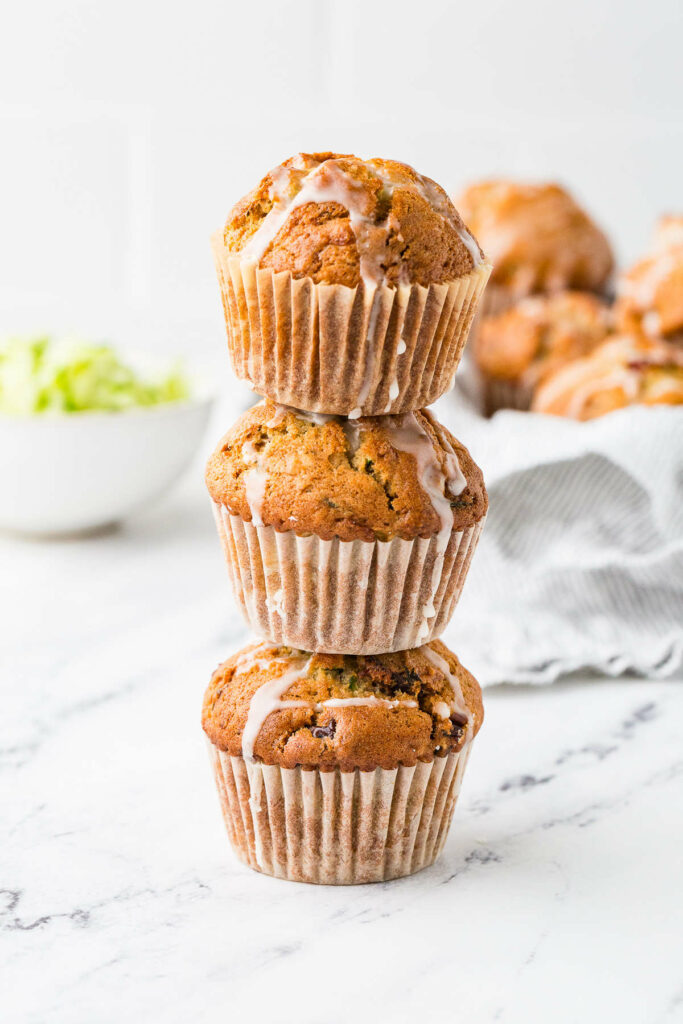
Why This Sourdough Zucchini Muffin Recipe Works
Sourdough discard softens the crumb: It makes the muffins tender and moist with no sourness (It also works great in these sourdough chocolate muffins).
Orange zest and glaze add brightness: Citrus lifts the flavor and keeps things fresh.
No peeling: Grated zucchini melts into the batter and keeps everything moist.
Customizable add-ins: Walnuts, pecans, raisins, or dates, use what you like or leave them out.
Curious how I adapted this recipe for sourdough discard? Jump to the recipe testing notes to learn more about the process and what worked best.

Recipe Tips
Don’t skip the squeeze: Lightly blot or squeeze the grated zucchini to keep the batter from getting too wet.
Use 100% hydration discard: This recipe is tested with a starter fed at equal parts flour and water. Thicker or thinner versions may affect the crumb.
Older discard: As it ages, discard becomes more acidic, thinner, and more sour. This recipe works with old discard, but expect a looser batter and a tangier flavor.
No overmixing: Fold the batter gently once the dry ingredients go in. Overmixing = tough muffins.
Fill ’em up: Aim for just under the top of the muffin wells for those domed tops.
Glaze while warm: Drizzle the orange glaze while the muffins are still warm to help it soak in.
More ways to use discard: Got extra? Try it in these sourdough banana pancakes and my sourdough lemon poppyseed muffins.
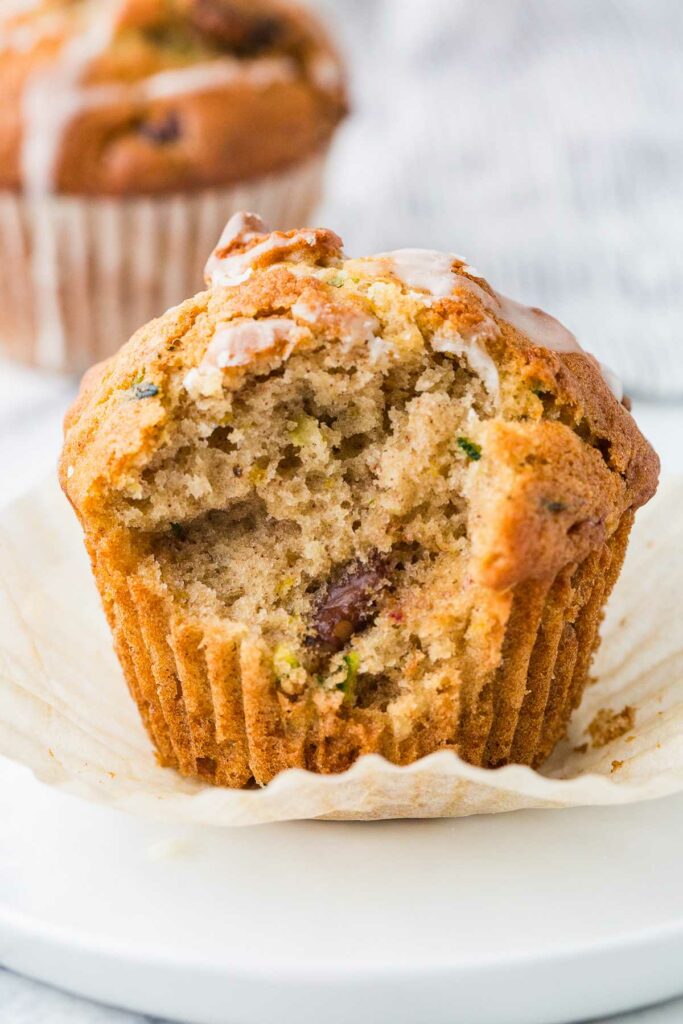
Sourdough Discard Zucchini Muffins
These sourdough zucchini muffins prove that discard baking doesn’t have to taste like a compromise. They’re soft, flavorful, and easy enough to whip up before your coffee cools. That citrus glaze? It seals the deal.
Pin this now to find it later!
Pin It
Tender Sourdough Zucchini Muffins
If you make this recipe, please leave a star rating and comment.
Ingredients
- ¾ cup granulated sugar, 150 grams
- ¾ cup vegetable oil, 150 grams
- ½ cup sourdough discard, 120 grams
- 1 large egg
- 1 egg yolk
- zest of one orange
- 2 teaspoons vanilla extract
- 1 ⅓ cups zucchini, grated
- 1 ½ cups all-purpose flour, 180 grams
- 1 teaspoon baking powder
- ¾ teaspoon baking soda
- ¾ teaspoon salt
- ¾ teaspoon cardamom, or cinnamon
- ½ cup walnuts, or pecans, chopped (optional) (56 grams)
- ½ cup chopped dates, or raisins (optional) (56 grams)
Orange Glaze
- ½ cup powdered sugar, 57 grams
- 1½ to 2 teaspoons orange juice
Instructions
- Preheat oven to 375°F. Line or grease a 12-well muffin pan.
- In a large bowl, whisk together the sugar, oil, sourdough discard, egg, egg yolk, orange zest, vanilla, until smooth. Stir in the grated zucchini.
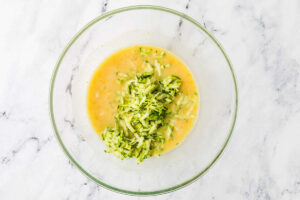
- Set a metal sifter over the bowl and sift in the flour, baking powder, baking soda, salt, and cardamom. Gently fold the batter with a wide spatula just until no streaks of flour remain, don’t overmix.
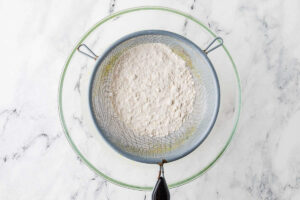
- Fold in the chopped nuts and chopped dates, if using.
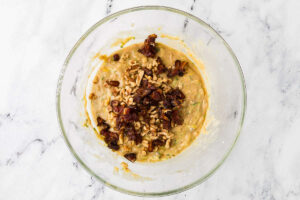
- Spoon the batter into the muffin cups, filling each a bit more than ¾ full, just below the top edge.
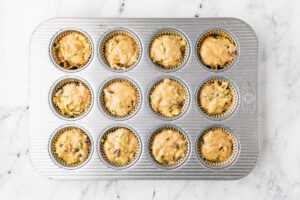
- Bake for 20–27 minutes, or until a toothpick inserted in the center comes out clean.
- Let them cool in the pan for a few minutes, then transfer to a rack to finish cooling.
Orange Glaze
- While the muffins cool, whisk together the powdered sugar and orange juice in a small bowl until smooth. Adjust the juice as needed to reach your desired consistency.
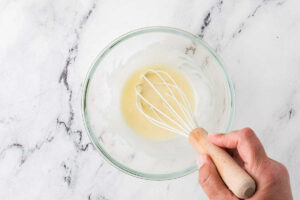
- Drizzle the glaze over the muffins while they’re still slightly warm, this helps it soak in a bit and adds an extra burst of citrus flavor. Let the glaze set for 10–15 minutes before serving.
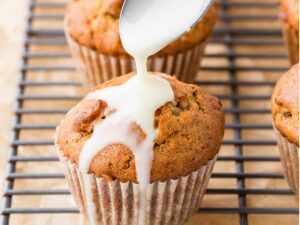
Notes
Nutrition
Nutrition information is automatically calculated, so should only be used as an approximation.
 Like this recipe? Rate & comment below!
Like this recipe? Rate & comment below!Want something fruity instead? These Mango Muffins are sweet, tropical, and just as easy to whip up.
Recipe Testing Notes
Adapting my classic zucchini muffins to use sourdough discard took a bit of experimenting to keep that same tender, fluffy texture. I wanted them to stay just as moist and light as the original, not dense or heavy, which can easily happen when baking with discard.
This recipe uses 120g of 100% hydration sourdough discard, which adds about 60g each of flour and liquid.
Adjusting the Liquid
To balance the added liquid, I initially removed both egg whites, since they were the only reliable source of removable water-based moisture. (Zucchini also adds liquid, but the amount can vary a lot. And oil behaves differently in batters and doesn’t affect hydration in the same way.)
While that adjustment worked on paper, the muffins lost structure and didn’t have the texture I was aiming for.
Eventually, I found that removing just one egg white, and keeping the second egg’s yolk for richness and structure, gave the best result. So instead of using 2 whole eggs, I used 1 whole egg plus 1 egg yolk. This reduced the liquid by about 30g, which brought hydration closer to balance while preserving the soft crumb and overall structure.
Adjusting the Flour
Fermented flour in sourdough discard doesn’t behave like fresh flour. It doesn’t build structure the same way, especially in tender recipes like muffins.
With that in mind, I expected to remove about 30g of flour to offset the 60g of fermented flour in the discard, and after several tests, that amount gave the best result.
I experimented with larger flour reductions (up to 40–60g), but those batches turned out too wet and lacked structure. On the other hand, keeping all the original flour made the muffins noticeably dense. Reducing the flour by 30g struck the ideal balance: the texture stayed light and tender, and the muffins rose beautifully.
I also tested adding an extra ¼ cup of flour to encourage taller muffin tops. While it did create a thicker batter and more rise, the crumb was denser and slightly dry, not the result I was looking for. The more modest 30g reduction provided the best balance of rise, moisture, and tenderness.
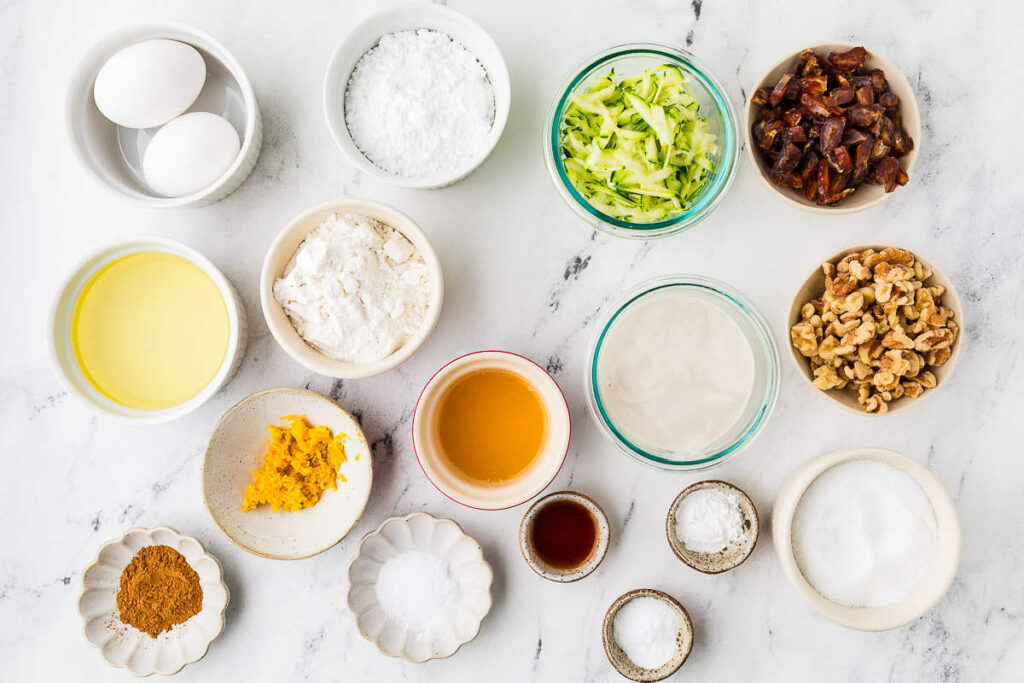


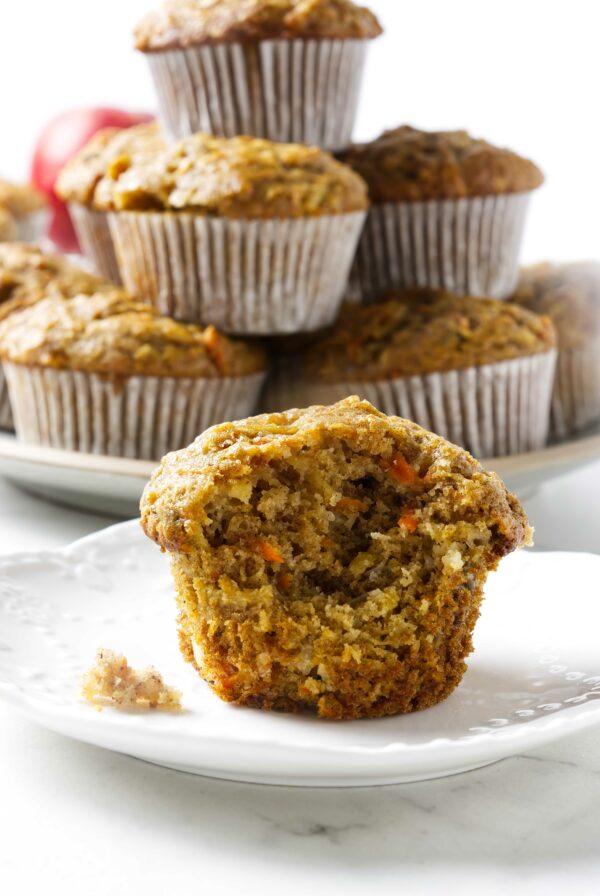
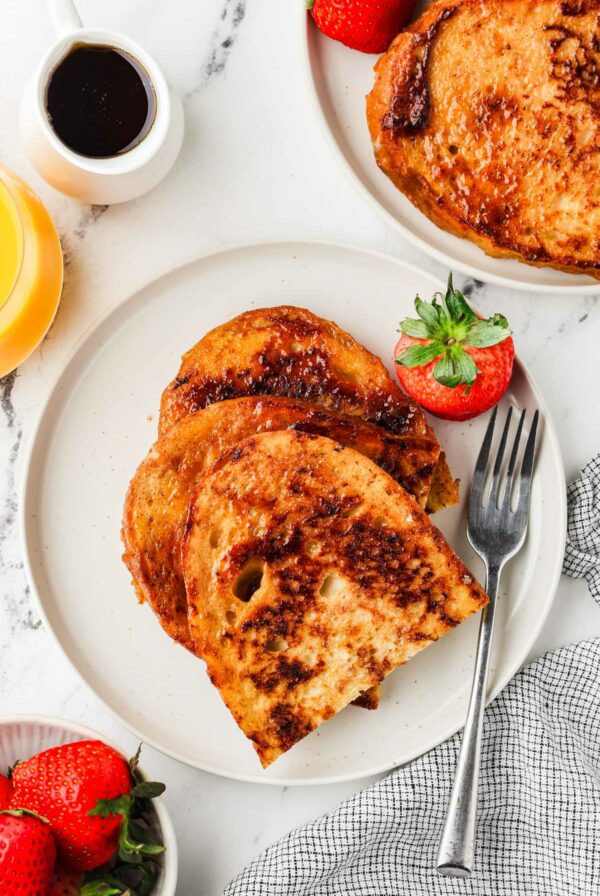












Followed recipe exactly and added 1/2 cup of pecans. These are excellent muffins. Thinking I will add some orange zest to the glaze next time for an added pop of flavour. Great recipe!
Thank you so much! I’m glad you enjoyed them. Pecans sound like the perfect addition, and I love your idea of orange zest in the glaze. Thanks for the comment.
these were amazing!! I only had bread flour on hand so used that and swapped the eggs for flax eggs (2 tbsp ground flax and 3 Tbsp water to try to get the right ratio for the extra yolk) but these turned out amazing and will definitely be a repeat while zucchini is in season!
I’m so glad you loved them! Thanks for sharing your swaps—great to know they still turned out well with bread flour and flax eggs.